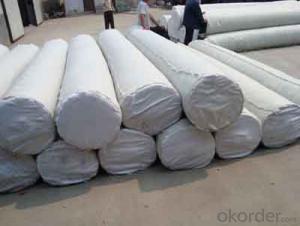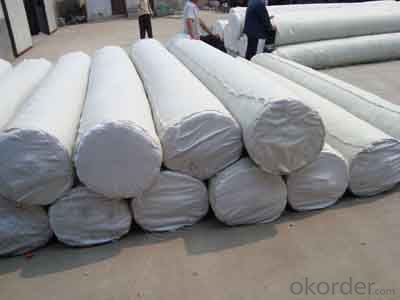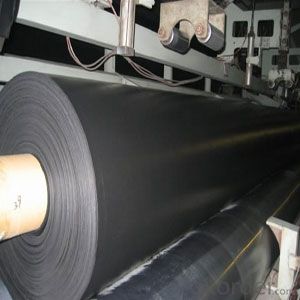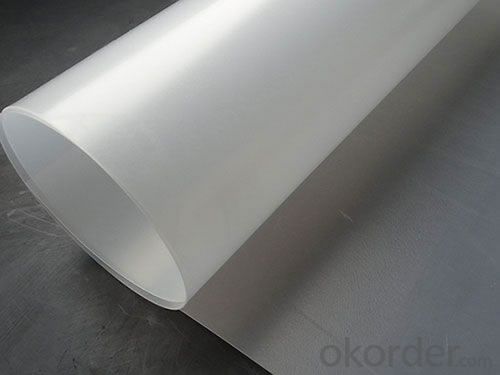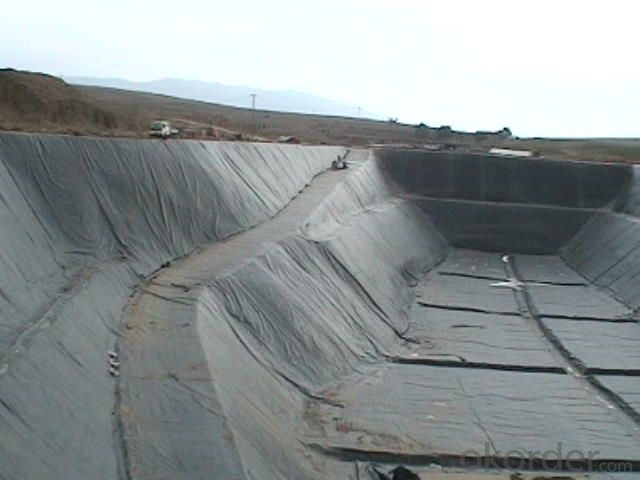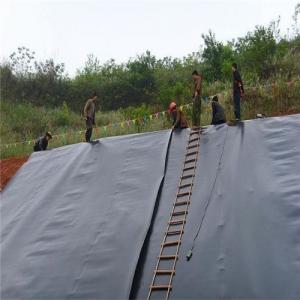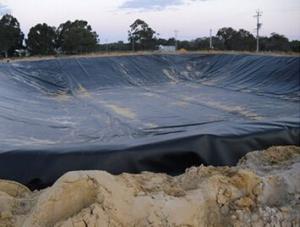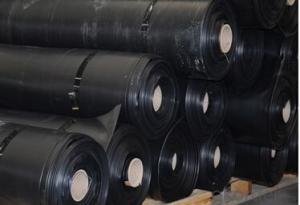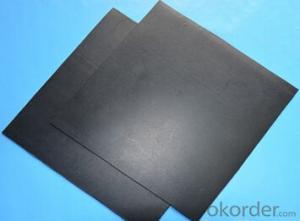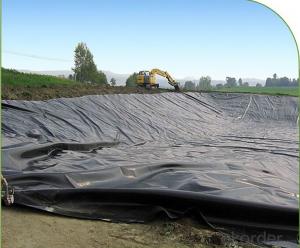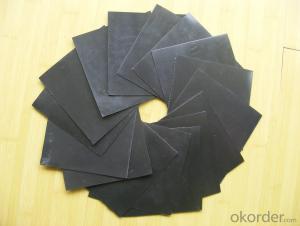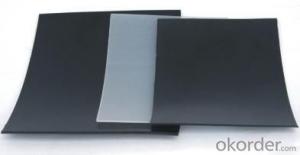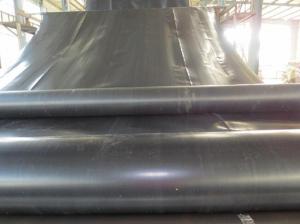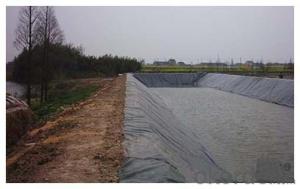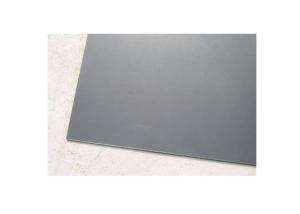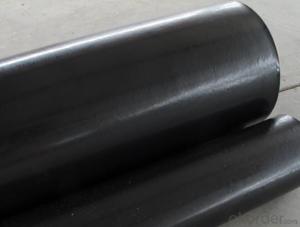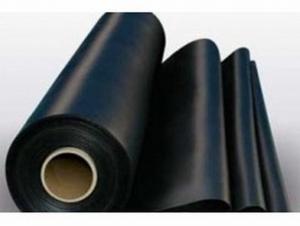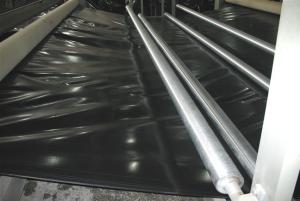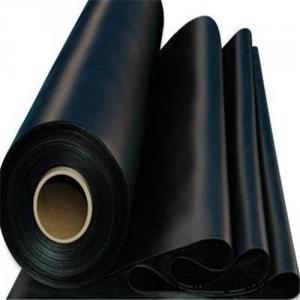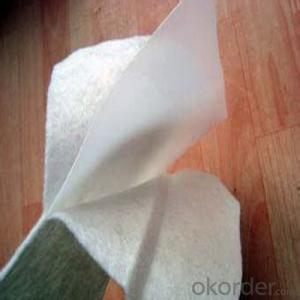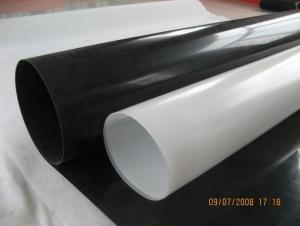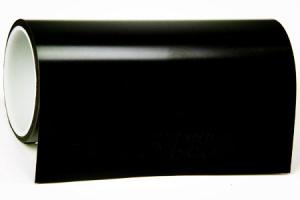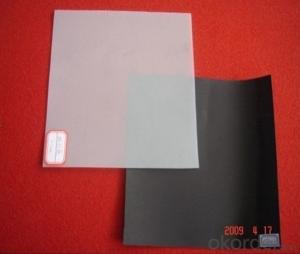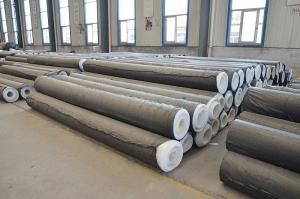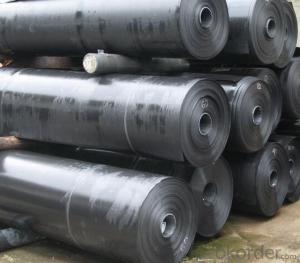HDPE Geomembrane For Gas Collection Produce by CNBM
- Loading Port:
- Qingdao
- Payment Terms:
- TT OR LC
- Min Order Qty:
- 10000 m²
- Supply Capability:
- 500000 m²/month
OKorder Service Pledge
OKorder Financial Service
You Might Also Like
Structure of Hdpe Geomembrane For Gas Collection
HDPE geomembrane is based on the material of plastic film, relative to the HDPE geomembrane has better applied and suppleness, is to update the generation of soil seepage control material. HDPE geomembrane and geotextile glue them into a soil anti-seepage material it has corrosion resistance, good low temperature resistance, light quality, laceration resistant ability and other characteristics; The characteristics of its low cost, high quality and low price is not matched by other same category geotechnical seepage control material.
Main Features of Hdpe Geomembrane For Gas Collection:
1, Environmental protection, sanitation, such as landfill, sewage treatment plant, power plant regulation pool, industrial, hospitals, solid wastes, etc.;
2, Water conservancy projects, such as rivers and lakes of reservoir dam seepage and leakage, reinforcement, the canal seepage control, vertical wall, slope protection, etc.;
3, Municipal engineering: the subway, building underground engineering, planting roof, roof garden, sewage pipe seepage control;
4, Polyethylene anti-seepage film applicable garden: artificial lake, river, reservoir and golf course of the bottom of the pond, slope protection, green lawn waterproof, etc;
5, Petrochemical, chemical plants, refineries, storage tanks, seepage control, chemical reaction pool, sedimentation tank lining and secondary lining, etc.
6, Mining: washing pool, pool heap leaching, heap yard, dissolving tank, tank, the bottom line of the yard, tailings anti-seepage, etc;
7, Agriculture: reservoir, the drinking pool, XuShuiTang, waste treatment, seepage of irrigation system;
8, Aquaculture: intensive, factory breeding pool, fish pond, shrimp ponds circle of lining, sea cucumber, slope protection, etc.;
9,Salt industry: saltworks crystallization pool, halogen pool plastic film covering, salt film, salt pond Shan membrane.
Hdpe Geomembrane For Gas Collection Images
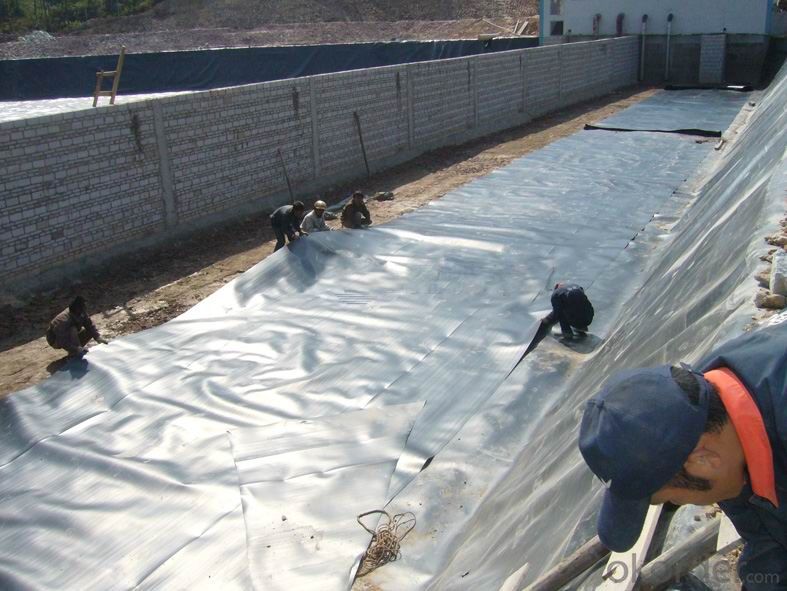
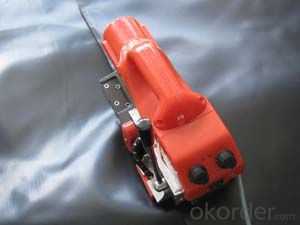
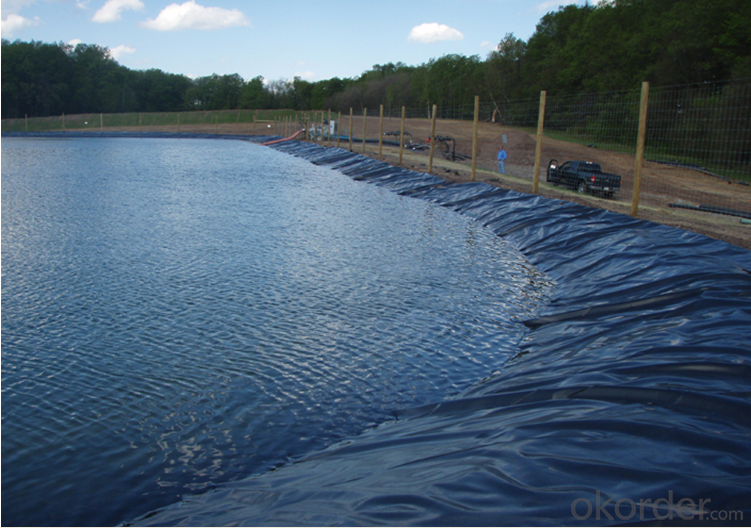
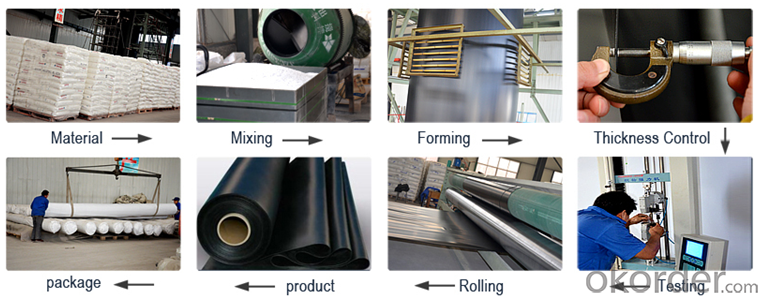
Hdpe Geomembrane For Gas Collection Specification :
| Item | Value | ||||||||
0.3mm | 0.05mm | 0.75mm | 1.0mm | 1.25mm | 1.50mm | 2.0mm | 2.5mm | 3.0mm | |
| Density(g/cm3) | 0.939 | ||||||||
| Tensile strength at break | 6 | 9.5 | 14 | 19 | 23 | 28 | 37 | 47 | 56 |
| (TD/MD)/(N/mm) | |||||||||
| Elongation(TD/MD)/%≥ | 400 | ||||||||
| Tear strength (N)≥ | 27 | 45 | 63 | 90 | 108 | 135 | 180 | 225 | 270 |
| Puncture strength (N)≥ | 52.5 | 84 | 133 | 175 | 217 | 259 | 350 | 434 | 525 |
| Carbon black content (%) | 2.0-3.0 | ||||||||
| Carbon black dispersion | Carbon black dispersion(only near spherical agglomerates)for10different views 9 in categories 1 or 2 and 1 in category
| ||||||||
| Low tempreture impact brittle | Pass | ||||||||
| property at -70°C | |||||||||
| Vapour permeability coefficient | ≤1.0*10-13 | ||||||||
| (cm2·s.pa) | |||||||||
| Dimensional stability | ±2.0 | ||||||||
| Oxidative induction time (min) | ≥60 | ||||||||
FAQ:
1. How about the delivery time?
Two weeks upon receipt of down payment.
2. What kind of payments do we accepted?
T/T, L/C, WesternUnion, MoneyGram.
3. What's are the MOQ?
Normally the MOQ is 5000 SQM in theory.
And we can provide you free samples for quality inspection.
4. Do you charge for the samples?
Accordeing to our company policy, the samples are freee, we only charge the freight fee. And we will return the freight fee in your second order.
5. Can you produce the product according to customers' requirements?
Sure, we are professional manufacturer, OEM and ODM are both welcome
- Q: Does the blue-ray of mobile phone screen protector have any effect?
- Yes, of course, 1, anti-blue ray: It can prevent eyes damage from 380um-420um of high-energy short-wave blue light, and reduce the birth of melanin in the skin from blue light; 2, anti-virus: Silver nano-coating, sterilization rate of 99%, effectively protect the user's health and safety; 3, anti-shock: Hardness is 3H, which can effectively prevent phone screen damage from accidental falls, collision and grind; 4, anti-scratch: It can protect the screen of mobile phone or tablet computer to be scratched; 5, high light transmission: The screen is still bright and clear after sticking the film ; 6, it is easy to clean: Gently wipe the screen is as clear as a new screen; 7, It is easily posted with no bubbles.
- Q: What are the differences of seepage-proof geomembrane and polypropylene fiber impervious geotextile?
- The seepage-proof geomembrane is made of high density polyethylene by flat extrusion or blow molding. The white seepage-proof geomembrane is heated and covered with polypropylene fiber geotextile top and bottom which finally becomes polypropylene fiber impervious geotextile. It has a good extensibility and environmental resistance as well as better anti-seepage effect. The seepage-proof geomembrane is usually black or white HDPE.
- Q: Can geomembranes be used in floating baffles for wastewater treatment?
- Yes, geomembranes can be used in floating baffles for wastewater treatment.
- Q: What are the advantages of using geomembranes in coastal and marine protection projects?
- Geomembranes offer several advantages in coastal and marine protection projects. Firstly, they act as a barrier, preventing water infiltration and reducing the risk of erosion. This helps to stabilize the coastline and protect valuable infrastructure from being damaged by waves and currents. Additionally, geomembranes are highly durable and resistant to UV degradation, ensuring long-term performance and reducing the need for frequent maintenance. Furthermore, these materials are flexible and can be customized to fit various shapes and sizes, making them suitable for different project requirements. Lastly, geomembranes have low permeability, which prevents contaminants from seeping into the water, safeguarding the marine ecosystem and preserving water quality. Overall, the use of geomembranes in coastal and marine protection projects improves resilience, reduces environmental impact, and enhances the overall effectiveness of these initiatives.
- Q: How do geomembranes prevent soil compaction?
- Geomembranes prevent soil compaction by acting as a barrier between the soil and external stressors, such as heavy machinery or vehicle loads. The geomembrane distributes the weight and pressure over a larger surface area, reducing the intensity of the load on the soil. This prevents the soil particles from being compressed and compacted, maintaining the soil's natural structure and preventing damage to its physical properties.
- Q: Soft film smallpox box film how to make?
- Production: To use the acrylic boards, plastic sheeting, or other insulating material, i often take use of the double layer 2.5mm black aluminum plate. First, to carve the words you need with the single-sided adhesive paper. Then paste it on sided adhesive paper, and penetrate a drill or hole with the help of electric drill or carving machine(The pitch is according to the size of the word, the general interval is 10-15mm). !
- Q: How to deal with the bubbles in the mobile phone film?
- If the film is not pasted well, you can peel it off, and then rinse with the detergent and water. After that, you paste it with water again, holding a glasses cloth to squeeze out the water. If you failed to poste the film, you can still stick it again well.
- Q: what's the items needed to be noticed in the pavement of composite geo-membrane?
- Avoid stones, bricks and hard objects, geomembrane construction can be fixed submerged. Avoid uneven subsidence. 3, to avoid sharp objects hurt, can also be used with anchor nail 1, the roots should be cleared, laying the ground for a smooth, while laying flat at best or bottom of the embankment to accommodate the deformation of the matrix: 6, according to different circumstances, pull hard, without stones, pulling should be avoid when paving composite geo-membrane, the joints of composite geo-membrane should avoid side slope, and leave certain stretching and cracks.
- Q: Can geomembranes be installed on slopes?
- Yes, geomembranes can be installed on slopes. They are commonly used as slope protection systems to prevent erosion, control water flow, and provide stability to steep slopes. The installation process may involve anchoring the geomembrane and implementing proper slope stabilization techniques to ensure its effectiveness.
- Q: What is the cost of membrane structure?
- Membrane structure is a novel architectural form, compared with the traditional building materials, it has many advantages.
Send your message to us
HDPE Geomembrane For Gas Collection Produce by CNBM
- Loading Port:
- Qingdao
- Payment Terms:
- TT OR LC
- Min Order Qty:
- 10000 m²
- Supply Capability:
- 500000 m²/month
OKorder Service Pledge
OKorder Financial Service
Similar products
Hot products
Hot Searches
Related keywords
